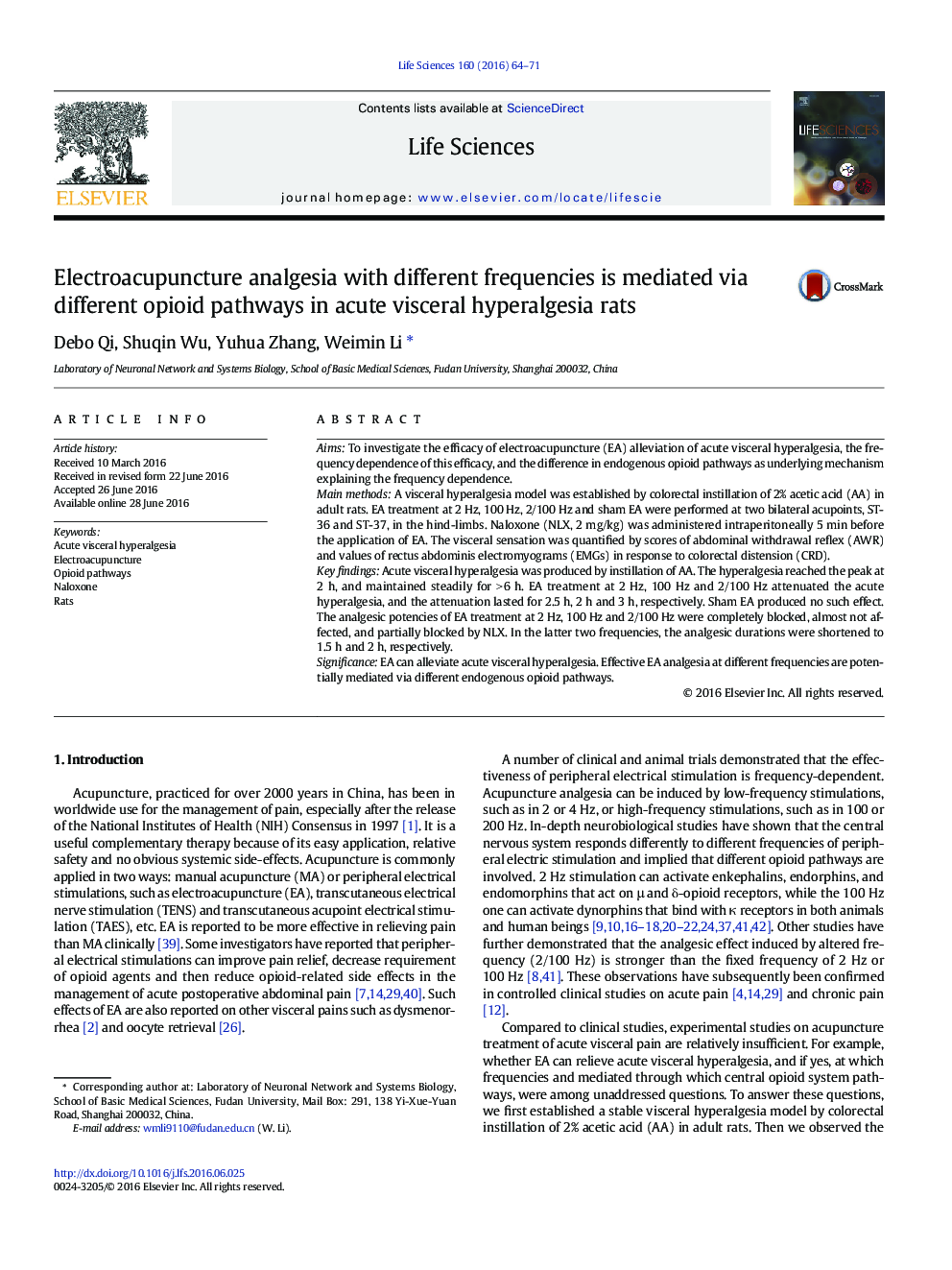| Article ID | Journal | Published Year | Pages | File Type |
|---|---|---|---|---|
| 2550394 | Life Sciences | 2016 | 8 Pages |
AimsTo investigate the efficacy of electroacupuncture (EA) alleviation of acute visceral hyperalgesia, the frequency dependence of this efficacy, and the difference in endogenous opioid pathways as underlying mechanism explaining the frequency dependence.Main methodsA visceral hyperalgesia model was established by colorectal instillation of 2% acetic acid (AA) in adult rats. EA treatment at 2 Hz, 100 Hz, 2/100 Hz and sham EA were performed at two bilateral acupoints, ST-36 and ST-37, in the hind-limbs. Naloxone (NLX, 2 mg/kg) was administered intraperitoneally 5 min before the application of EA. The visceral sensation was quantified by scores of abdominal withdrawal reflex (AWR) and values of rectus abdominis electromyograms (EMGs) in response to colorectal distension (CRD).Key findingsAcute visceral hyperalgesia was produced by instillation of AA. The hyperalgesia reached the peak at 2 h, and maintained steadily for > 6 h. EA treatment at 2 Hz, 100 Hz and 2/100 Hz attenuated the acute hyperalgesia, and the attenuation lasted for 2.5 h, 2 h and 3 h, respectively. Sham EA produced no such effect. The analgesic potencies of EA treatment at 2 Hz, 100 Hz and 2/100 Hz were completely blocked, almost not affected, and partially blocked by NLX. In the latter two frequencies, the analgesic durations were shortened to 1.5 h and 2 h, respectively.SignificanceEA can alleviate acute visceral hyperalgesia. Effective EA analgesia at different frequencies are potentially mediated via different endogenous opioid pathways.
